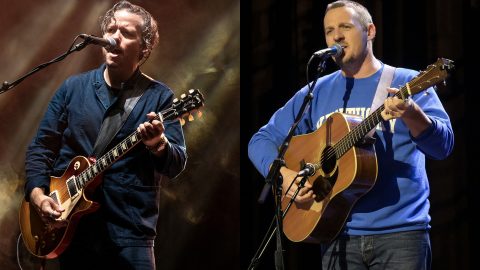NME Music News, Reviews, Videos, Galleries, Tickets and Blogs | NME.COM
Quarantine has a way of making you newly grateful for the smallest of miracles. Here’s one: that Simon Brogan failed his Maths exam at the University of Leeds in 1968.
Brogan was the Students’ Entertainment Secretary at the university, meaning he booked bands to perform on campus. Bands like The Who, who recorded Live at Leeds in the university refectory in 1970. Released 50 years ago this month, it may be the most iconic live album in rock’n’roll. But if Brogan had passed Maths, the record wouldn’t exist. He’d have graduated earlier, before booking the band.
It’s thanks to Brogan’s flunking – and the presence of some heavy-duty recording equipment – that we have that ecstatic version of ‘Magic Bus’, 15 convulsive minutes of ‘My Generation’ and a much more rugged run through ‘Tommy’ than the one captured in studio in 1969. You need only to compare the two recordings of the rock opera to be reminded why live albums are utterly essential.
In the months and years leading up to this pandemic, live albums were beginning to look increasingly obsolete. Their primary purpose, documentation, is basically served by YouTube. Meanwhile, high-quality live streams seem to offer an even closer approximation of the concert-going experience. Perhaps more to the point, we no longer need these select recordings to shape our collective memory of major musical performances. We didn’t have to wait a year for ‘Beyoncé: Live at Coachella 2018′ – we decided in real time, via hashtags, that her set was one for the history books.
But now we’re all stuck at home, and lovers of live music – including Sir Dave Grohl himself, who recently penned an impassioned op-ed on the subject – don’t know when we’ll get our fix. My humble suggestion? Ditch Instagram Live. Throw on some headphones and a plain old concert recording.
Grohl is right to point out the tactile aspects of going to a show: moshing, dancing, high-fiving a stranger when you share a favourite song. All of these rituals help to turn a great concert into unforgettable one. But what about the purely musical components of a concert? The adjusted vocal melodies, the freshly accented drumming, the tiny textures and harmonies that aren’t present in studio recordings? These are perfected by musicians with almost feral understandings of each other – people who spend months crammed together in vans, who sweat all over each other on stage, who know what a look in the eye or a kick of the leg means for the next note.

Live albums, not just live shows, have turned me on to new music and deepened my appreciation for the familiar. I had tried to get into indie provocateurs Car Seat Headrest, for example, but it just wouldn’t take – until I heard ‘Commit Yourself Completely‘, their 2019 live album, which I can’t stop playing. Or take fun-punks IDLES: I was already a fan when they released ‘A Beautiful Thing’ last year, but that live version of ‘Colossus’ – with its slower, far more menacing intro – made the original version irrelevant to me. I could write 800 more words on live recordings that surpass the studio versions, but here are nine to start: Pearl Jam‘s ‘Black,’ from 1998’s ‘Live on Two Legs’.
Of course, many artists, from The Who to Beyoncé, emphasise heavy visual components when performing live (impressive digital backdrops for the former; a marching band for the latter). That’s part of their art, and it’s thrilling. Still, there’s much to be said for occasionally closing your eyes and letting the sounds simply take over – for letting those manic chords in ‘Magic Bus’ truly rattle your bones. Back in March, The Los Angeles Times published a handy quarantine guide to doing just that (tips include: “please don’t turn the volume up to 11”).
“Musicians spend years making their albums,” journalist Randall Roberts wrote in that piece. “They struggle over syllables, melodies, bridges and rhythms.” And then we consume it as background music, with little regard for the painstaking subtleties.” Roberts suggests we try listening to these works the in much the same way that we read books or watch movies: with our full attention.
Let’s make the same effort with live music, which is made not over years but on a moment’s whim. The thrill of listening closely to great musicians, working on a stage and captive to the moment, can be overwhelming, even if you didn’t witness it in person. It’s a small, socially un-distanced miracle. And, especially in quarantine, it comes to life on tape.
The post From The Who to Beyoncé, quarantine has given a new lease of life to the live album appeared first on NME Music News, Reviews, Videos, Galleries, Tickets and Blogs | NME.COM.




